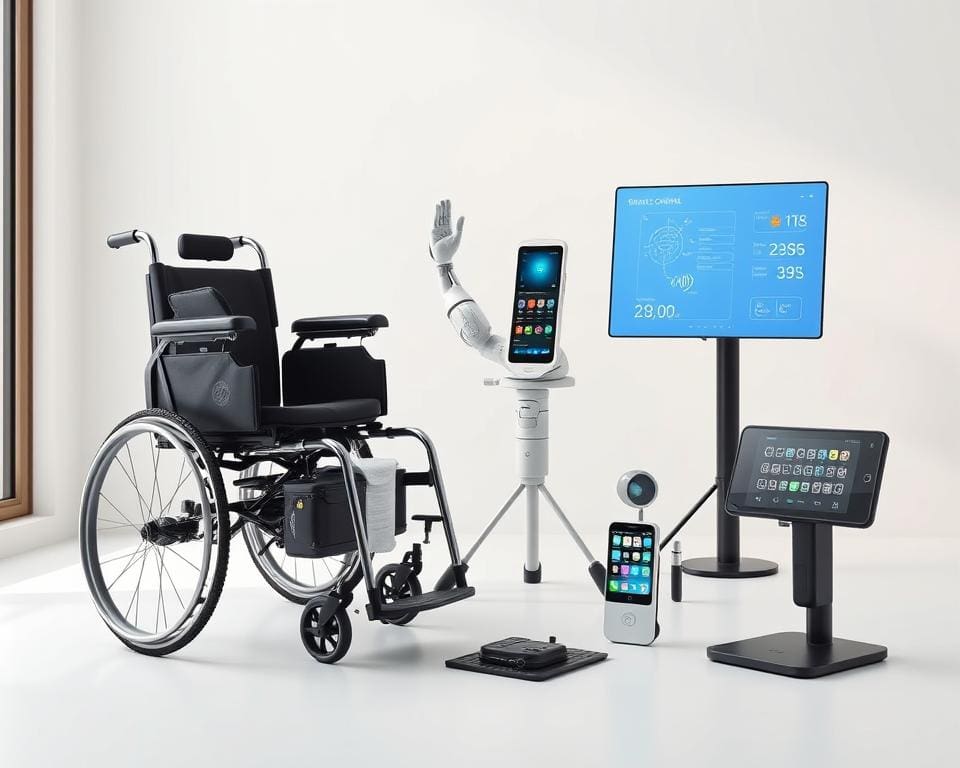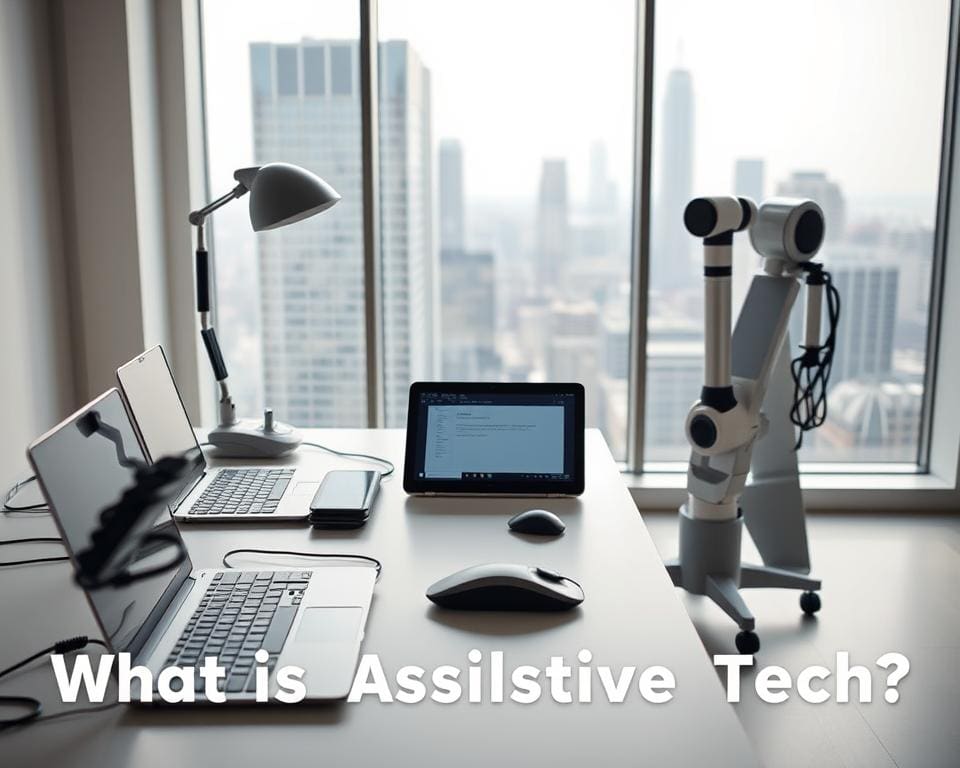Assistive technology encompasses a wide range of devices and systems designed to enhance an individual’s capacity to perform tasks that may prove challenging or unfeasible due to disabilities. These assistive devices, from hearing aids to wheelchairs, play a pivotal role in supporting users by improving their functional capabilities and promoting autonomy. Understanding what assistive tech entails is essential for appreciating its transformative impact on the quality of life for those with disabilities. The application of assistive technology not only fosters independence but also empowers individuals to thrive in their daily lives, enriching their experiences significantly.
Understanding Assistive Technology
Assistive technology encompasses a wide range of tools and devices designed to support individuals with disabilities. These can range from simple items like adapted utensils to complex electronic systems. The significance of assistive technology cannot be overlooked; it serves a vital role in enhancing the autonomy of users, empowering them to undertake daily tasks, pursue educational opportunities, and secure meaningful employment. By reducing societal barriers, assistive technology fosters inclusivity and encourages active participation in community life.
Definition and Importance of Assistive Technology
At its essence, assistive technology refers to any device or software that aids individuals with disabilities in overcoming challenges they encounter in daily life. The benefits of assistive technology extend beyond mere convenience; they contribute significantly to the quality of life. Users gain access to resources that facilitate learning, communication, and self-sufficiency. This empowerment transforms lives, allowing individuals to engage fully with their communities and realise their potential.
How Assistive Technology Supports Independence
Assistive technology enhances independence by enabling users to perform tasks that may otherwise be difficult or impossible. Individuals often experience a boost in self-esteem and confidence through the effective utilisation of assistive technology for disabilities. Simple actions, such as operating a smart home device or using speech recognition software, can lead to substantial improvements in everyday living. This technology not only helps with mundane tasks but also opens avenues for social interaction and personal growth.

What Is Assistive Tech
Assistive technology encompasses a range of tools designed to aid individuals with disabilities, enhancing their quality of life and promoting independence. Understanding the guidelines for assistive tech becomes crucial for ensuring that these devices are effectively integrated into everyday activities.
Guidelines for Use and Integration
When selecting assistive devices, users should start by assessing their specific needs. Each person’s situation is unique, necessitating tailored solutions that align with their preferences and lifestyle. A careful examination of available options can lead to the ideal choice of assistive technology.
Training for both users and caregivers plays an indispensable role in this process. Familiarity with how to operate the selected devices maximises the potential benefits of assistive technology. Scheduled workshops or demonstrations can provide hands-on experience, ensuring both users and caregivers feel confident in utilising the devices.
Integration of assistive technology into existing environments, whether at home or in the workplace, should be seamless. This can involve minor adjustments to surroundings or routines, which avoids disruptions and enhances the user’s daily experience. Proper implementation can lead to improved capabilities and a better overall quality of life.
Case studies of successful implementations emphasise the effectiveness of well-integrated assistive solutions. These instances illustrate how users have thrived through the appropriate use of technology, providing inspiration for others seeking similar outcomes. Adopting these guidelines for assistive tech can empower individuals to explore new possibilities, contributing to their independence and personal growth.
Benefits of Assistive Technology
The integration of assistive technology into daily life brings transformative effects, significantly improving the quality of life for many individuals. From enhancing living skills to promoting inclusivity, these technologies serve a vital role in empowering people with disabilities. The benefits of assistive technology reach far and wide, supporting individuals in various aspects of their lives.
Enhancing Daily Living Skills
Assistive technology devices enhance daily living skills, making self-care, meal preparation, and household management accessible for individuals with disabilities. These devices can include adaptive kitchen utensils, personal alert systems, and specialised organisers, all designed to simplify tasks. By fostering independence through these tools, people gain confidence and autonomy in managing their daily routines.
Improving Communication and Connectivity
Effective communication is essential in fostering relationships and communities. Assistive technology for disabilities provides alternative ways to communicate, such as speech-generating devices and communication applications. These tools enable users to express themselves clearly and effortlessly enhance connections with family and friends. Improved communication fosters a greater sense of belonging and participation in social interactions.
Fostering Inclusivity in Society
Assistive technology devices play a crucial part in creating a more inclusive society. By allowing individuals with disabilities to engage fully in work, education, and social activities, these technologies advocate for equal opportunities. Workplace adaptations and educational resources ensure everyone has the tools needed to thrive, promoting a culture of inclusivity and understanding.
Types of Assistive Technology
Understanding the various types of assistive technology can empower individuals to select the right tools that enhance their daily lives. These solutions range from communication devices that facilitate meaningful interactions to mobility aids that promote independence and specialised computer software designed to assist with specific tasks.
Communication Devices
Communication devices play a vital role in helping individuals express their thoughts and needs. Among the different assistive technology devices available, speech-generating technologies and text-to-speech applications are particularly impactful. These devices transform text into spoken words, providing a voice to those who may struggle with verbal communication.
Mobility Aids
Mobility aids encompass a broad spectrum of tools designed to promote mobility and independence. Devices such as wheelchairs, scooters, and walkers empower individuals with physical challenges to navigate their environments confidently. These assistive technology devices significantly enhance the quality of life by enabling users to participate actively in their communities.
Specialised Computer Software
Specialised computer software opens up new possibilities for users, ensuring they can access information and technology effectively. This category includes programs for screen reading, voice recognition, and alternative input methods. Such assistive technology devices are essential for individuals with disabilities, as they provide necessary adaptations for seamless computer interaction.
Assistive Technology in Education
Assistive technology in education plays a pivotal role in shaping a conducive learning environment for students with disabilities. These technologies not only provide essential support but also empower students to thrive academically and socially. Understanding the tools available can help educators and institutions create inclusive classrooms that cater to diverse learning needs.
Tools for Learning Disabilities
Various tools for learning disabilities have emerged to assist students in overcoming challenges in their educational journey. Some effective options include:
- Audiobooks that facilitate auditory learning and comprehension.
- Text-to-speech programs that help students process written material more effectively by converting text into spoken words.
- Interactive software designed to engage students through gamified learning experiences.
Technology for Inclusive Classrooms
Technology for inclusive classrooms fosters an environment where all students can participate fully. By leveraging assistive technology for disabilities, schools can significantly enhance educational outcomes. Training educators to recognise and implement these technologies enables them to support each student’s unique learning style. This results in:
- Greater accessibility to curriculum resources.
- Improved engagement and motivation among students.
- Enhanced social integration and collaboration.
Assistive Technology for the Elderly
As the population ages, the importance of assistive technology for the elderly becomes increasingly evident. This demographic often encounters unique challenges, including mobility limitations and cognitive decline. Fortunately, various assistive devices have been developed to promote safety, enhance independence, and improve overall quality of life. For instance, emergency alert systems ensure quick access to help, while home monitoring technologies provide peace of mind to both users and their families.
The benefits of assistive technology are profound, as they allow elderly individuals to live more fulfilling lives within their own homes. Mobility aids, such as walkers and scooters, enable seniors to maintain their mobility and engage with their surroundings, fostering a sense of autonomy. Additionally, smart home systems can automate various tasks, such as lighting control and temperature regulation, making daily living more accessible and comfortable.
Ultimately, empowering the elderly population through assistive technology is essential. By incorporating these innovative solutions, elderly individuals can maintain meaningful connections with their families and communities, enriching their social lives. As technology continues to evolve, it holds the promise of a brighter, more independent future for our ageing loved ones, ensuring they thrive in their later years.









